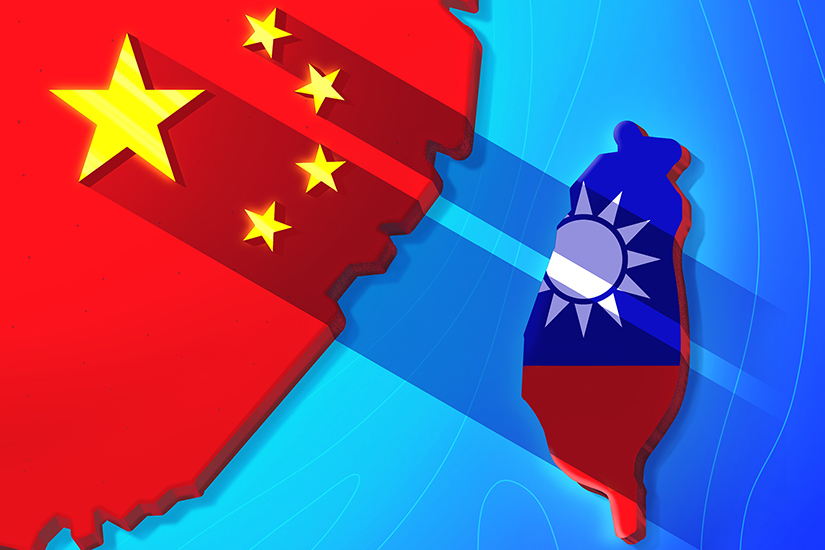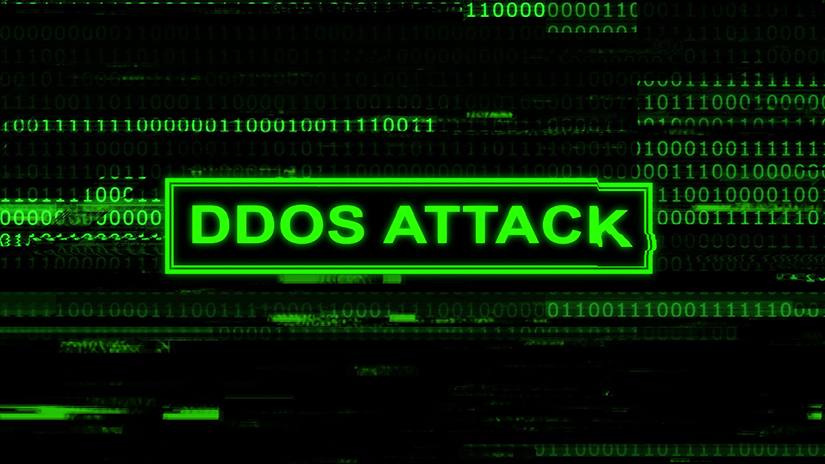Introduction
On April 1 and 2, the Chinese People's Liberation Army (PLA) conducted a large-scale military exercise, "Strait Thunderbolt-2025A," in the around Taiwan, involving PLA, PLA Navy (PLAN), PLA Air Force (PLAAF) , and PLA Rocket Force (PLARF) as well as the Chinese Coast Guard (CCG).[1] In response, Taiwan's Ministry of National Defense announced that it had identified a total of approximately 100 military aircraft, more than 20 naval vessels, and over 10 CCG's ships over the two days.[2]
Although it was unmentioned in media reports, a significant change in this exercise compared to previous strategies was the PLA's decision to conduct large-scale drills without any prior announcement, neither from the Eastern Theater Joint Operations Command Center Affairs Office nor the Taiwan Affairs Office, regarding the establishment of a restricted navigation zone over a wide area surrounding the main island of Taiwan.
The author analyzes this major change as an indication of the Chinese government's advancement of its salami-slicing tactics.[3] In addition, during this exercise, the Public Affairs Office sequentially announced updates on the exercise. The announcements from the Public Affairs Office coinciding with the exercises represent China's attempt to realize its "One China" policy using strategic communications that link politics and the military.
In response to this series of Chinese military activities, Japan needs to analyze each and every large-scale military exercise individually, but also prepare strategic and tactical responses from a long-term perspective to China's salami-slicing tactics. This paper will review the salami-slicing tactics that have become the framework for achieving China's maritime strategy for Taiwanese reunification, and discuss the possibilities and challenges of the "One Theater (OCEAN)" concept as a Japanese response.

Background of China's Salami Slice Tactics
Activities by the PLA using salami-slicing tactics have been active since before and after the inauguration of the Xi Jinping administration. Beginning with de facto control of Scarborough Shoal in the South China Sea in 2012, further examples since 2014 include its occupation of Woody Island in Paracel Islands, and Mischief Reef, Fiery Cross Reef, and Subi Reef in the Spratly Islands, all located in the South China Sea. The above are representative examples of China's gradual occupation of islands in the South China Sea since 2014.
While the occupation of islands in the South China Sea and the militarization of other countries' ports by China are major problems in themselves, we should not forget that the salami-slicing tactic is a strategy used to reunify Taiwan into the "One China". For many years, there was a tacit understanding that military aircraft and other forces from both China and Taiwan would not cross the median line of the Taiwan Strait, but on March 31, 2019, two fighter jets (J-11) crossed the median line, an event that broke the tacit understanding.[4] On September 19, 2020, after crossing the median line, a PLA pilot responded to a radio warning from the Taiwan Air Force by declaring that "there is no median line in the Taiwan Strait", a position later echoed by both China's Ministry of Foreign Affairs and the Taiwan Affairs Office of the State Council, which respectively stated that "there is no median line in the Taiwan Strait."[5] This was a major step forward in achieving the "One China" objective through salami-slicing tactics. As of today, crossing the median line has become the norm, and the previously implied median line has disappeared.
Salami-slicing tactics around Taiwan in recent years
Based on an analysis of the Chinese government's responses and military exercises since the disappearance of the implicit median line, this section delves deeper into China's steady progress in salami-slicing tactics around Taiwan. First, it is important to note the large-scale exercises following the visit of U.S. House Speaker Nancy Pelosi’s to Taiwan in August 2022. At the same time that Speaker Pelosi visited Taiwan and met with then President Tsai Ing-wen, the Chinese military conducted large-scale exercises. This large-scale exercise involved the participation of PLA, PLAN, PLAAF, and PLARF, and was accompanied by missile launch on the maritime perimeter surrounding the main island of Taiwan. At the same time, there were reports of Chinese disinformation campaigns suggesting an invasion of Taiwan, as well as DDoS attacks on the websites of Taiwan's Presidential Office, Ministry of Foreign Affairs, and Ministry of National Defense, with multiple computers and devices simultaneously accessing the websites in large numbers. Simultaneously, electronic billboards at convenience stores and other locations around the city were hacked to display notices condemning Speaker Pelosi's visit to Taiwan.[6]
In April 2023, during the "Joint Sword" exercise, military aircraft were observed a total of 232 times over a three-day period. Naval activities included the deployment of the aircraft carrier Shandong and other ships to the Western Pacific Ocean, where they conducted takeoff and landing drills on the aircraft carrier in the waters south of Miyako Island.[7] Additionally, military aircraft launched from the Shandong entered Taiwan's Air Defense Identification Zone (ADIZ) for the first time from the east.
During Exercise "Joint Sword-2024A" in May 2024, the CCG's vessels participated in a military exercise and conducted maritime law enforcement training for the first time, which attracted attention as the drill aimed to stop ships from entering the main island of Taiwan in the event of a Taiwan contingency. In October of the same year, "Joint Sword-2024B" used the deployment of the aircraft carrier Liaoning as well as CCG's vessels to surround the main island of Taiwan, with the Chinese Coast Guard stating that the actual action of controlling Taiwan consisted of lawfully actions in accordance with the "One China" principle.[8] In the "Strait Thunder-2025A" exercise in April of this year, as mentioned above, a large-scale exercise was conducted in the vicinity of Taiwan without announcing the establishment of a restricted navigation area over a wide area surrounding the main island of Taiwan.
Outside of these large-scale exercises, Taiwan's Ministry of National Defense reported that in April 2023, a PLA drone (TB-001) operated on a route that circled Taiwan for the first time.[9] Such activities have been ongoing and are now a regular occurrence, which can also be seen as part of the larger salami-slicing strategy.
In this way, the PLA is gradually working to achieve "One China" through repeated patrol activities and large-scale military exercises using salami-slicing tactics. This approach also has the effect of blurring the issue of whether China is conducting a large-scale exercise or an actual attempt to "invade Taiwan" by conducting widespread operations that gradually approach a full-scale invasion, as in Russia's invasion of Ukraine, for example.

Possibility of "One Theater (OCEAN)" concept as a Deterrence Measure
Japan, whose maritime borders are adjacent to both China and Taiwan, has a significant role in deterring a Taiwan contingency caused by a potential Chinese invasion, as well as in preventing the expansion of China's salami-slicing tactics. This section examines Japan's deterrence measures, taking up the idea of "One Theater" (a unified theatre of operations) as discussed by Defense Minister Nakatani Gen.
First, as the most effective measure for deterrence, it is important to deepen cooperation in peacetime with other countries that share concerns over the security threat posed by China. The concept of "One Theater" has emerged in the practice of dialogue, exercises, and strategic communication for the purpose of joint deterrence and response. "One Theater" refers to the concept of viewing the Indo-Pacific region as a single "war zone" with the objective of strengthening defense cooperation with allies and like-minded countries. In a meeting with U.S. Secretary of Defense Hegseth on March 30, 2025, Defense Minister Nakatani stated that "Japan has a "One Theater" concept, and would like to see Japan, the U.S., Australia, the Philippines, South Korea, and other countries as a single theater and deepen cooperation." Secretary Hegseth reportedly welcomed the idea.[10]
There was significant interest in what Defense Minister Nakatani would say about this new concept at the Shangri-La Dialogue held over three days from May 30, 2025. Here, Minister Nakatani rebranded the "One Theater" initiative as a maritime strategy, OCEAN (One Cooperative Effort Among Nations), an effort for multilateral cooperation in the Indo-Pacific region.[11]
Minister Nakatani stressed the need for the "OCEAN" concept through the following points. Although he did not name specific countries, he cited the following three points by authoritarian countries that are unilaterally changing the status quo by force: (1) they are rapidly hollowing out the "rules-based international order," (2) they are grossly disregarding "accountability," and (3) they are abdicating their "responsibility to the international public good."
On the other hand, in response to the harsh realities described above, the report cites the following five points as encouraging developments: (1) the expansion of ASEAN's security role, (2) the US-Japan alliance and Japan remain the cornerstone of peace and prosperity in the region and the world, (3) strengthening cooperation in the field of defense among countries that share common values and interests, (4) encouraging caution against excessive dependence on one country that does not share common values and interests, and (5) cross-regional cooperation with European countries and NATO).
On this basis, the following principles are reaffirmed as essential to the OCEAN initiative: (1) restoring a "rules-based international order," strengthening accountability, and promoting the "international public good" in the Indo-Pacific region; and (2) strengthening cooperation and coordination among individual voluntary initiatives to create "synergies" that bring new values and benefits to the entire Indo-Pacific region. The "OCEAN" concept has been proposed to advance these objectives, and Japan has demonstrated its commitment to remaining at the center of the initiative.[12]
Japan's leadership of the OCEAN initiative and strengthening cooperation with other countries will deter China from using its salami-slicing tactics not only in the East China Sea, South China Sea, and South Pacific, but also in the waters surrounding Taiwan. To take the lead in the "OCEAN" initiative, it is also necessary for Japan to enhance its own defense capabilities. In December 2022, Japan formulated the so-called "Three Security Documents"—National Security Strategy, National Defense Strategy, and Defense Force Development Plan—which set a goal of achieving a defense budget at the 2% of GDP level within five years, thereby drastically strengthening its defense capability.

Challenges of the "OCEAN" Concept
It is important to recognize that there are many challenges to the "OCEAN" concept. Here, we would like to address two of them.
The first is the relationship between Japan and Taiwan. Currently, cultural and economic exchanges between Japan and Taiwan are active, but security exchanges are limited. In other words, from a security perspective, the Taiwan region is a vacuum within the "One Theater (OCEAN)" framework. Therefore, Japan needs to build, expand, and strengthen practical relations with Taiwan not only on economic, but also on security, and government levels. In order to realize this vision, it will be necessary to promote public-private exchanges in the security field (Track 1.5), but it may take time to develop this into government-to-government exchanges (Track 1.0).
Another limitation of the "OCEAN" concept for Japan is whether it can engage in security responsibilities as far as the maritime airspace in the South China Sea and the South Pacific. After the Cold War, Japan enacted the Armed Attack Situations Response Act in 2003 and passed the Security Related Law ("The Act on the Establishment of Peace and Security Legislation" and "Act on Cooperation with United Nations Peacekeeping Operations and Other Operations") in 2015, which allowed for the limited exercise of the right of collective self-defense, expanded the scope of activities of the Self-Defense Forces (SDF), and enabled logistical support overseas. In recent years, the Reciprocal Access Agreement (RAA)[13] Implementation Act was enacted (April 16, 2025), and the Acquisition and Cross-Servicing Agreement (ACSA)[14] was introduced to promote coordination with other countries to facilitate overseas activities. Currently, the Japanese Ministry of Defense and the SDF, including the Ground, Maritime, and Air SDF, are conducting numerous joint training exercises, goodwill drills, and goodwill visits with the countries in the region envisioned by the "OCEAN" concept, with the Indo-Pacific Deployment (IPD) being a prominent example. However, a geopolitical challenge persists, as it remains uncertain whether Japan can engage responsibly in maritime and air domains beyond its territorial land, waters, or airspace—particularly when salami-slicing tactics escalate into unilateral changes to the status quo by force, in the context of island disputes, or even in the event of war. This is precisely the issue that must be discussed when revising the National Security Strategy and the National Defense Strategy. If these limitations cannot be resolved, the impetus for Japan to take the lead in promoting the "One Theater (OCEAN)" concept in a responsible manner will be weakened.
Conclusion
As discussed thus far, China's salami-slicing tactics have become a major tactic for achieving China's maritime strategy and have produced many results large-scale exercises using military force against Taiwan, but also unilateral changes to the status quo in the East China Sea, South China Sea littoral states, and South Pacific nations. However, this has not led to concrete discussions among allies and like-minded countries that share common values to address the salami-slicing tactics in earnest.
The "One Theater (OCEAN)" concept is expected to deter and respond to the threat posed by China's salami-slicing tactics through cooperation and information sharing with countries, including those around Taiwan. Going forward, close attention should be paid to concrete security measures initiated cooperatively by Japan, its allies, and like-minded countries.
(2025/08/06)
Notes
- 1 "Chinese Military Exercises Around Taiwan for Second Consecutive Day," NHK, April 2, 2025.
- 2 The author's analysis based on the following two-day announcement by the Ministry of National Defense of the People's Republic of China. "Military News Update, PLA activities in the waters and airspace around Taiwan," Ministry of National Defense of the People's Republic of China, April 2, 2025; "Military News Update, PLA activities in the waters and airspace around Taiwan," Ministry of National Defense of the People's Republic of China, April 3, 2025.
- 3 Salami-slicing tactics are tactics to gain a military advantage in a confrontation centered on the sea, including littoral and islands, by invading in such a way that each salami is sliced off thinly so that it does not become a conflict, and when the invasion is noticed, the strategic objectives, such as the occupation of islands, have been achieved. It is said to be a tactic as a means to achieve strategic goals.
- 4 Lin Tze-chuan and Wang Zonghiong, Main editors, "2018 Evaluation Report on the Security Situation in the Yintai Area," Institute for National Defense and Security Research, 2019, pp. 24-25.
- 5 For a series of developments, see Madoka Fukuda, "The Biden Administration's 'One China' Policy and the Taiwan Strait Situation," The Japan Forum on International Relations, p. 6.
- 6 Monma, Rira "The Actual Situation and Intentions of the Chinese People's Liberation Army's Exercises against Taiwan," China and Taiwan Study Group Commentary, No. 3, National Institute for Defense Studies, January 15, 2025, p. 1.
- 7 Monma, Rira, "The Actual Situation and Intentions of the Chinese People's Liberation Army's Exercises Against Taiwan," p. 3.
- 8 "Chinese Military: Large-Scale Military Exercises Around Taiwan, Aircraft Carrier Also Deployed, Taiwan Strongly Condemns," NHK, October 14, 2024.
- 9 "即時軍事動態 中共解放軍臺海周邊海、空域動態," Ministry of National Defense of the People's Republic of China, April 28, 2023.
- 10 "Defense Minister Nakatani Communicates 'One Battle Area' Concept to U.S., Pointing Out Risk of Involvement," Asahi Shimbun, April 15, 2025.
- 11 "DM Nakatani's Speech at the 22nd Shangri-La Dialogue (2025) 2nd Plenary Session: Ensuring Stability in a Competitive World 31st May 2025," Ministry of Defense, Self-Defense Forces.
- 12 Ibid.
- 13 The Reciprocal Access Agreement (RAA) is a bilateral agreement between the Self-Defense Forces and foreign militaries that defines entry/exit procedures and the legal status of troops when they visit the other country for joint training, disaster relief, and other cooperative activities. Japan currently has RAAs with Australia, the United Kingdom, and the Philippines.
- 14 The Acquisition and Cross-Servicing Agreement (ACSA) is an agreement between the Self-Defense Forces and the armed forces of other countries to mutually provide each other with goods and services such as food, fuel, ammunition, transportation, and medical care. Japan currently has ACSAs with the United States, Australia, the United Kingdom, Canada, France, India, Germany, and Italy.

